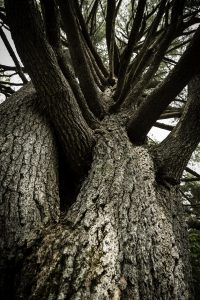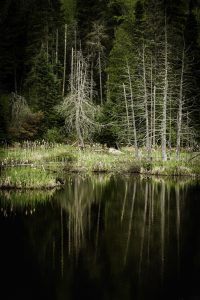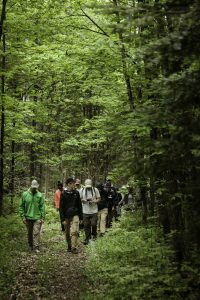Here are some quick facts you can drop at your social gatherings!
- RJANP has 1.27 square kilometres of wetlands.
- The Ruisseau Jackson Nature Reserve created in 2019 adds 215 acres of conservation areas to a series of connected municipal green spaces.
- The pickerel frog, a species likely to be designated as threatened, has been spotted.
- The area contains rare forest stands, including old stands of red spruce and balsam fir, a black ash – balsam fir stand and an old cedar grove with red spruce and balsam fir.
- Ruisseau Jackson is part of the Rivière à Simon watershed.
- Ruisseau Jackson, Rivière Hamilton, Jackson Creek and Shadow River: these are some of the creek’s former names.
- RJANP won a Citizen Initiative Award from the David Suzuki Foundation for a nature walk in May 2016.
- Roughly 50% of RJANP’s territory lies in the Municipality of Morin-Heights.
- 25.6% of RJANP’s area is in the Municipality of Mille-Isles and 24.9% is in Saint-Sauveur.
- On a May morning, you could spot nearly 70 species of birds near the geographic centre of RJANP.
- The green snake, a species likely to be designated as threatened or vulnerable, has been seen in the area.
- Given the total surface area of wetlands and forests in the RJANP area, the economic value of the water treatment services provided by Mother Nature is estimated at $6.5 million annually.
- 62 properties in the RJANP area measure more than 10 hectares.
- The land within the RJANP area is mostly covered by forest, but there are 58 hectares of water bodies.
- The majority of the properties measure less than 5,000 square metres (59.5%).
- The first prestigious support for the project came from Peter Bridgewater, outgoing Secretary General of the Ramsar Convention on Wetlands of International Importance, and outgoing Secretary of UNESCO’s Man and the Biosphere Programme.
- The area’s highest point is 410 metres above sea level (masl), and the lowest is 225 masl.
- Lac Anne is the source of Ruisseau Jackson.
- From Lac Seale (a large marsh), Ruisseau Jackson meanders over three kilometres before reaching Lac Écho.
- The economic value of nature’s water purification services in the 3.3 kilometre area between Lac Seale and Lac Écho is estimated at around $238,000 annually! And this is just considering the 30 metres bordering the creek’s shores.
- The RJANP watershed contains two regulated lakes: Lac Écho and Lac Mud.
- The largest number of forested stands are sugar maple – yellow birch, deciduous stands dominated by sugarmaple and coniferous stands dominated by balsam fir.
- Ruisseau Jackson was identified as a stream favourable to the wood turtle, a species that has been designated as vulnerable in Quebec.
- Around 55% of the water in Lac Écho comes from Ruisseau Jackson.
- Of the 12 warbler species observed during an inventory-taking in 2016, two are rare species: the Wilson’s warbler (Cardellina pusilla) and the northern waterthrush (Parkesia noveboracensis).
- The Virginia marsh-St. John’s-wort (Triadenum virginicum), found in the RJANP area, is a species likely to be designated as threatened or vulnerable.
- The watershed is located in traditional territories of the Algonquin people and of the Anishinaabe (Anishinabewaki (ᐊᓂᔑᓈᐯᐗᑭ)).



